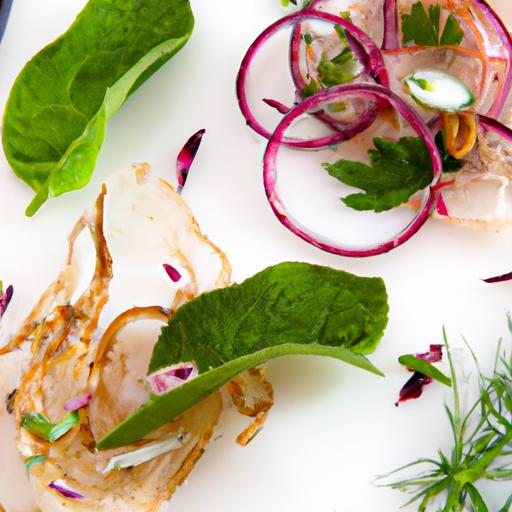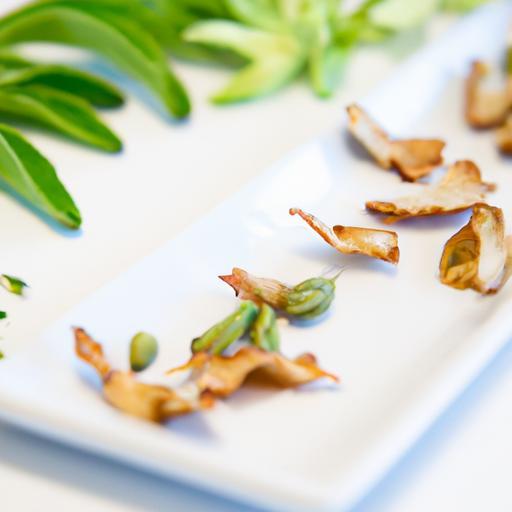There’s a certain magic in transforming fresh herbs into perfectly dried treasures-unlocking concentrated flavors that dance in teas, soups, and seasonings alike. But how does one truly know when those verdant sprigs have reached that elusive state of crisp perfection? Herb drying, often seen as an art shrouded in mystery, is actually a science waiting to be decoded. In this article, we’ll take you on a sensory journey through the subtle signs and practical tips that signal when your herbs have dried just right-crisp, fragrant, and ready to elevate your culinary creations. Say goodbye to guesswork and hello to confidently dried herbs that preserve the essence of nature’s bounty.
Herb Drying Decoded: Spotting When Herbs Are Perfectly Crisp begins with understanding the subtle visual and textural clues that signal your herbs have reached ideal dryness. Mastering this art means capturing the vibrant flavors and fragrances that fresh leaves hold, preserved in a delicate balance between crispness and retention of essential oils. Whether you’re drying basil on your windowsill or using a dehydrator for oregano, pinpointing this moment transforms your culinary creations from ordinary to exceptional.
Prep and Cook Time
Preparation Time: 10 minutes
Drying Time: 1 to 3 days, depending on herb type and drying method
Yield
About 1 cup of dried herbs from 4 cups of fresh herbs
Difficulty Level
Easy to Medium
Ingredients
- 4 cups fresh herbs (such as basil, thyme, rosemary, or oregano)
- Optional: muslin bags or porous paper towels for drying
Instructions
- Harvest fresh herbs in the morning after dew has evaporated to maximize essential oils and flavor.
- Rinse gently under cold water to remove dirt, then pat dry with clean paper towels or a soft kitchen cloth to reduce moisture before drying.
- Remove lower leaves and group stems into small bunches tied with string or use herb drying racks to ensure even airflow.
- Choose your drying method: air dry in a warm, dark place with good ventilation, use a dehydrator set between 95°F – 115°F, or oven-dry at the lowest temperature setting with the door slightly ajar.
- Monitor regularly for texture-properly dried herbs will crumble with a gentle pinch, presenting no pliability or moisture, and their colors will remain vibrant but slightly muted.
- Test crispness by lightly bending leaves: they should shatter easily without bending or sticking. If pliable, continue drying; if overly brittle and powdery, herbs are overdried and may have lost some flavor.
- Store the dried herbs immediately in airtight containers, away from light and heat to lock in the concentrate of flavor.
Chef’s Notes: Tips for Success
- Visual cues: Well-dried herbs* retain a rich green or muted tone unique to their species-too brown or faded indicates over-drying.
- Test frequently: Checking texture every 8-12 hours helps catch herbs at perfect crispness, especially in humid climates.
- Use mesh trays or screen hangers to boost air circulation and prevent uneven drying or mold formation.
- Don’t wash herbs too long; excess moisture lengthens drying time and risks spoilage.
- Keep a drying journal noting times and conditions to perfect your process based on each herb variety.
Serving Suggestions
Use your freshly dried herbs to elevate roasting blends, enhance soup broths, or finish sauces with a burst of concentrated aromatics. Crumble the herbs over fresh salads or sprinkle atop homemade focaccia for visual appeal enhanced by texture and deep flavor. Consider layering dried basil over ripe tomatoes with a drizzle of olive oil-simple yet stunning.
| Nutrient | Amount per 1 tsp dried herbs |
|---|---|
| Calories | 3 kcal |
| Protein | 0.1 g |
| Carbohydrates | 0.7 g |
| Fat | 0.03 g |
Discover more herb drying tips here.
For an in-depth scientific approach to herb drying temperatures and air circulation, visit the Purdue University Herb Drying Guide which offers expert insights into preserving flavor and safety while drying.

Q&A
Q&A: Herb Drying Decoded – Spotting When Herbs Are Perfectly Crisp
Q1: Why is knowing when herbs are perfectly dry so important?
A1: Drying herbs isn’t just about losing moisture-it’s an art form. When herbs are perfectly dry, they retain their vibrant flavors, essential oils, and aromas. Over-dried herbs can become brittle and flavorless, while under-dried ones risk molding. Spotting the perfect crisp ensures your herbs are a tasty treasure, not a forgotten dust trap.
Q2: What visual clues tell me my herbs are ready?
A2: Herbs that are perfectly dry usually take on a matte, slightly faded look compared to fresh herbs’ vivid greenness. Leaves might curl gently at the edges and feel papery to touch. Stems snap easily rather than bend or feel rubbery. If your herbs look like miniature crinkled leaves floating in a breeze, you’re on the right track.
Q3: How can texture help me decode dryness?
A3: Gently crumble a leaf between your fingers. If it shatters into tiny flakes or powder, your herb is crisp and dry. If it feels flexible or damp, it needs more time. Think of it like autumn leaves-dry enough to crunch, but fragrant enough to flavor your dishes.
Q4: Are all herbs dried the same way or do some take longer?
A4: Each herb has its own personality. Delicate herbs like basil or cilantro dry faster and need more watchful eyes, while heartier ones like rosemary or thyme take longer. Generally, smaller, tender leaves dry quicker because their moisture escapes faster. Patience and observation are your best allies.
Q5: What mistakes should I avoid when drying herbs?
A5: Don’t rush. Using high heat or closing off airflow can trap moisture, leading to mold. Also, don’t pile herbs up-air circulation is key. Finally, avoid drying in direct sunlight, which can bleach the leaves and diminish essential oils. Slow and steady wins the herb race.
Q6: How should I store my perfectly crisp herbs?
A6: Once your herbs crackle pleasingly between your fingers, store them immediately in airtight containers away from light and heat. Glass jars with tight lids are ideal. Keep herbs whole until ready to use, as whole leaves preserve flavor longer than pre-crushed ones.
Q7: Can I tell dryness by smell?
A7: Absolutely! Perfectly dried herbs emit a concentrated, inviting aroma that’s often stronger than fresh herbs because water no longer dulls the scent. If your herbs smell musty or faint, they might be under-dried or past their prime.
Q8: What’s the trick to drying herbs evenly?
A8: Spread herbs in a single layer on clean screens, trays, or hang small bunches in a well-ventilated, shaded space. Flip or rotate leaves gently halfway through drying. This prevents moisture pockets and guarantees that satisfying snap when they’re done.
By decoding these cues-sight, touch, and smell-you’ll transform your herb-drying journey from guesswork to culinary mastery, capturing nature’s flavors perfectly crisp, every time.
In Retrospect
As the subtle whisper of time transforms vibrant leaves into brittle treasures, mastering the art of herb drying becomes both science and intuition. Knowing precisely when your herbs have reached that perfect crispness ensures that every pinch bursts with concentrated flavor and aroma, ready to elevate your culinary creations or soothe your herbal remedies. With this newfound understanding decoded, you’re no longer just drying herbs-you’re preserving nature’s essence at its finest. So, next time you pause to test a leaf’s snap or watch the shimmer of fading moisture, remember: in that perfect moment lies the secret to herb drying mastery.


